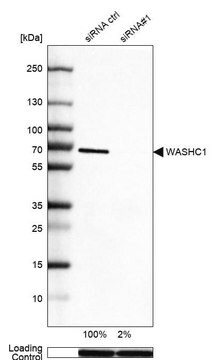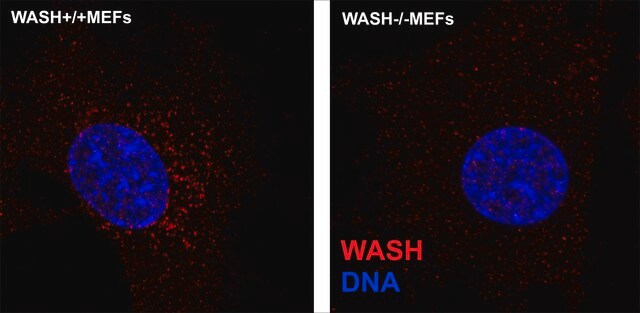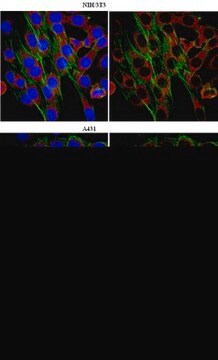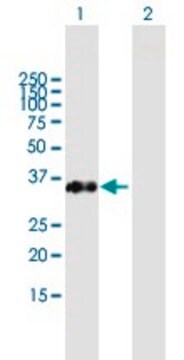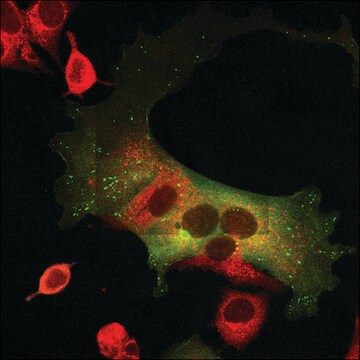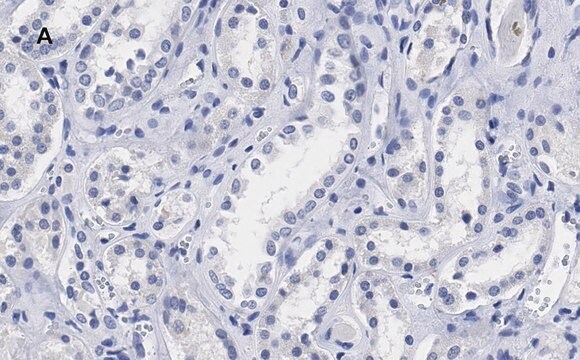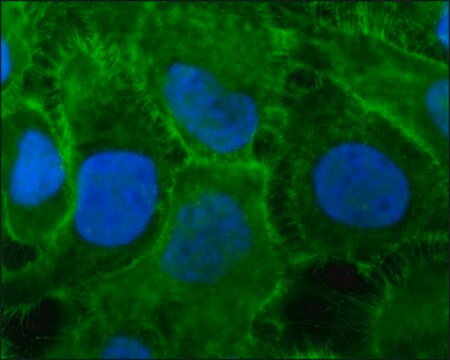SAB4200372
Anti-WASH1 antibody produced in rabbit
~1.0 mg/mL, affinity isolated antibody
Sinônimo(s):
Anti-FAM39E, Anti-WAS protein family homolog 1, Anti-WASH
About This Item
Produtos recomendados
fonte biológica
rabbit
conjugado
unconjugated
forma do anticorpo
affinity isolated antibody
tipo de produto de anticorpo
primary antibodies
clone
polyclonal
forma
buffered aqueous solution
peso molecular
antigen ~72 kDa
reatividade de espécies
human, rat, mouse
concentração
~1.0 mg/mL
técnica(s)
immunoprecipitation (IP): 5-10 μg using lysates of rat NRK cells.
western blot: 2-4 μg/mL using whole extracts of HEK-293T cells over-expressing mouse WASH1.
Condições de expedição
dry ice
temperatura de armazenamento
−20°C
modificação pós-traducional do alvo
unmodified
Informações sobre genes
human ... WASH1(100287171)
mouse ... ORF19(68767)
rat ... 367328(Wash2)
Descrição geral
Imunogênio
Aplicação
Ações bioquímicas/fisiológicas
forma física
Exoneração de responsabilidade
Não está encontrando o produto certo?
Experimente o nosso Ferramenta de seleção de produtos.
Código de classe de armazenamento
10 - Combustible liquids
Ponto de fulgor (°F)
Not applicable
Ponto de fulgor (°C)
Not applicable
Certificados de análise (COA)
Busque Certificados de análise (COA) digitando o Número do Lote do produto. Os números de lote e remessa podem ser encontrados no rótulo de um produto após a palavra “Lot” ou “Batch”.
Já possui este produto?
Encontre a documentação dos produtos que você adquiriu recentemente na biblioteca de documentos.
Nossa equipe de cientistas tem experiência em todas as áreas de pesquisa, incluindo Life Sciences, ciência de materiais, síntese química, cromatografia, química analítica e muitas outras.
Entre em contato com a assistência técnica